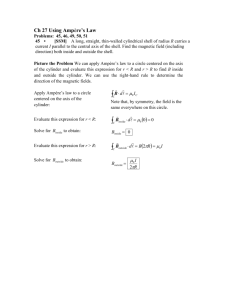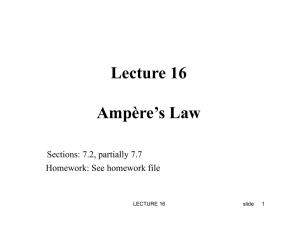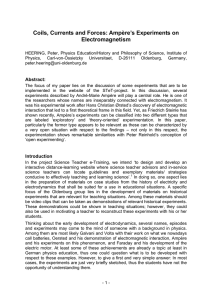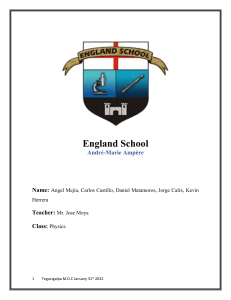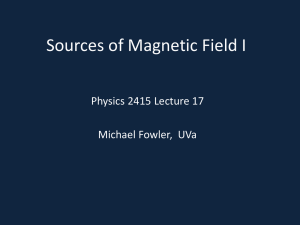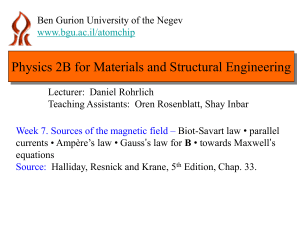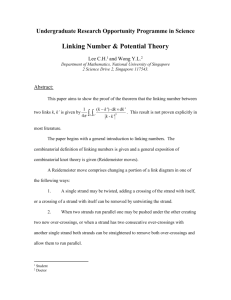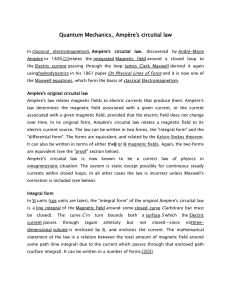Andre Marie Ampere
advertisement
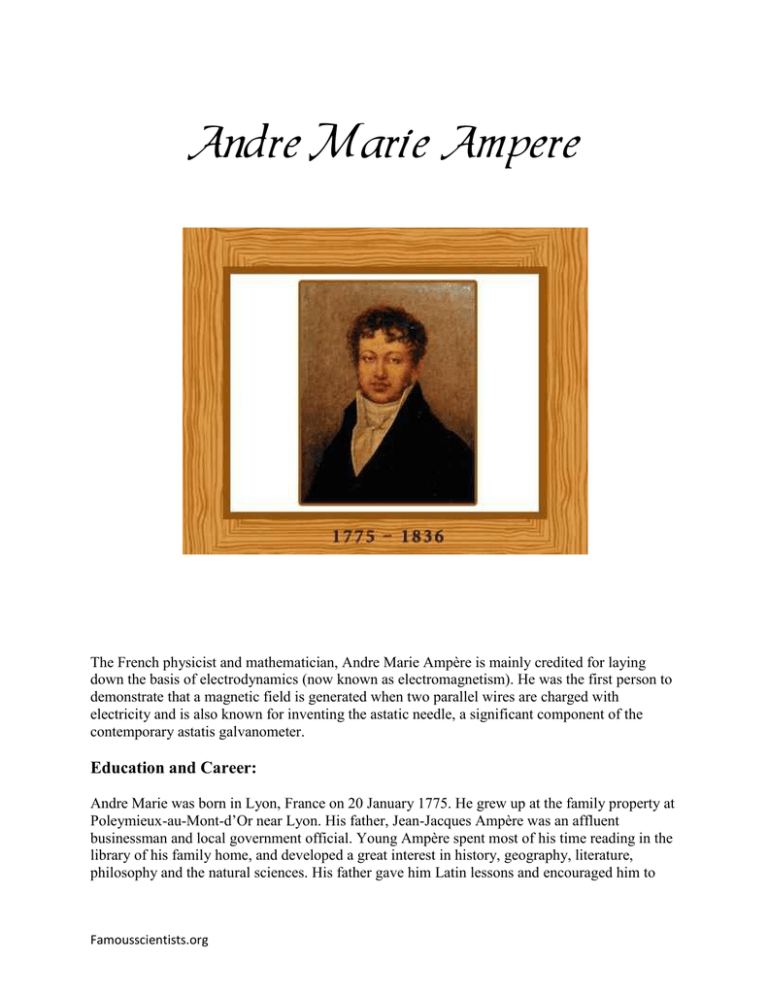
Andre Marie Ampere The French physicist and mathematician, Andre Marie Ampère is mainly credited for laying down the basis of electrodynamics (now known as electromagnetism). He was the first person to demonstrate that a magnetic field is generated when two parallel wires are charged with electricity and is also known for inventing the astatic needle, a significant component of the contemporary astatis galvanometer. Education and Career: Andre Marie was born in Lyon, France on 20 January 1775. He grew up at the family property at Poleymieux-au-Mont-d’Or near Lyon. His father, Jean-Jacques Ampère was an affluent businessman and local government official. Young Ampère spent most of his time reading in the library of his family home, and developed a great interest in history, geography, literature, philosophy and the natural sciences. His father gave him Latin lessons and encouraged him to Famousscientists.org pursue his passion for mathematics. At a very young age he rapidly began to develop his own mathematical ideas and also started to write a thesis on conic sections. When he was just thirteen, Ampère presented his first paper to the Academie de Lyon. This paper consisted of the solution to the problem of constructing a line of the same length as an arc of a circle. His method involved the use of infinitesimals, but unfortunately his paper was not published because he had no knowledge of calculus then. After some time Ampère came across d’Alembert’s article on the differential calculus in the Encyclopedia and felt the urge to learn more about mathematics. Ampère took few lessons in the differential and integral calculus from a monk in Lyon, after which he began to study the works of Euler and Bernoulli. He also acquired a copy of the 1788 edition of Lagrange’s Mecanique analytique, which he studied very seriously. From 1797 to 1802 Ampère earned his living as a mathematics tutor and later he was employed as the professor of physics and chemistry at Bourg Ecole Centrale. In 1809 he got appointed as the professor of mathematics at the Ecole Polytechnique, a post he held until 1828. He was also appointed to a chair at Universite de France in 1826 which he held until his death. In 1796 Ampère met Julie Carron, and got married in 1799. Contribution: During 1820, the Danish physicist, H.C Ørsted accidentally discovered that a magnetic needle is acted on by a voltaic current – a phenomenon establishing a relationship between electricity and magnetism. Ampère on becoming influenced by Ørsted’s discovery performed a series of experiments to clarify the exact nature of the relationship between electric current-flow and magnetism, as well as the relationships governing the behavior of electric currents in various types of conductors. Moreover he demonstrated that two parallel wires carrying electric currents magnetically attract each other if the currents are in the same direction and repel if the currents are in opposite directions. On the basis of these experiments, Ampère formulated his famous law of electromagnetism known as Ampère’s law. This law is mathematical description of the magnetic force between two electrical currents. His findings were reported in the Académie des Sciences a week after Ørsted’s discovery. This laid the foundation of electrodynamics. Death: Ampère died at Marseille on 10 June, 1836 and was buried in the Cimetière de Montmartre, Paris. The SI unit of measurement of electric current, the ampere, is named after him. Famousscientists.org

